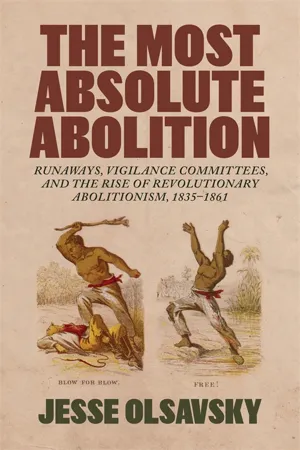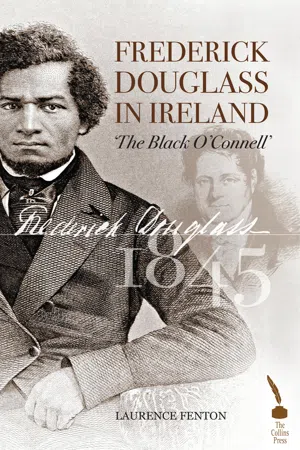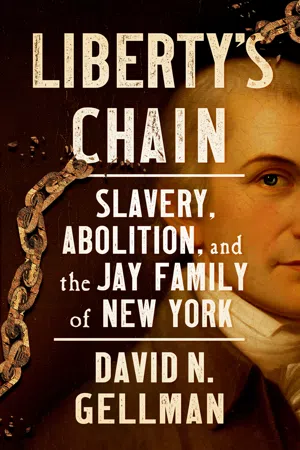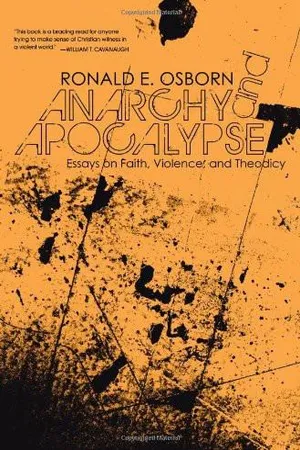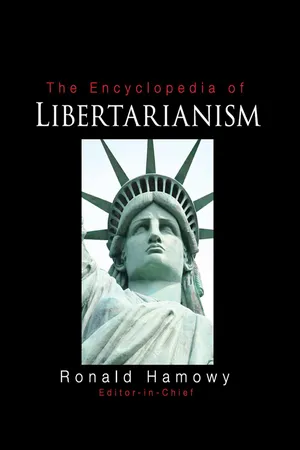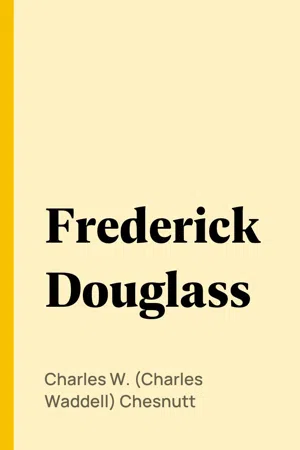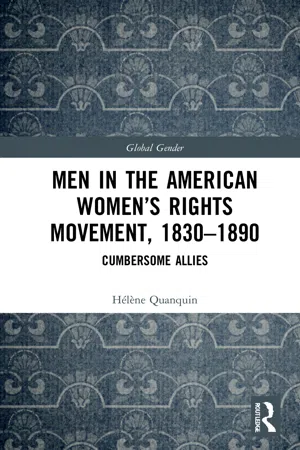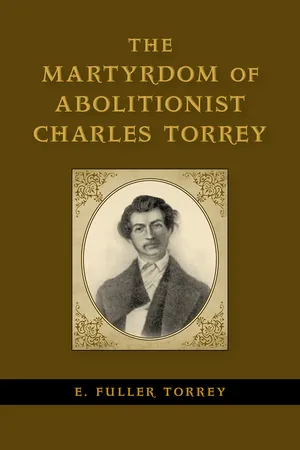History
William Lloyd Garrison
William Lloyd Garrison was a prominent American abolitionist and journalist who played a key role in the anti-slavery movement. He founded the influential newspaper "The Liberator" and was known for his uncompromising stance against slavery. Garrison's advocacy for immediate and complete emancipation made him a leading figure in the fight for abolition in the United States.
Written by Perlego with AI-assistance
Related key terms
Related key terms
1 of 4
Related key terms
1 of 3
9 Key excerpts on "William Lloyd Garrison"
- eBook - ePub
Critics and Crusaders
Political Economy and the American Quest for Freedom
- Charles A. Madison(Author)
- 2018(Publication Date)
- Routledge(Publisher)
Early in 1866 a national testimonial was written by some of Garrison’s ardent admirers, signed by the leading men of the day, and presented to the public with the object of collecting the sum of fifty thousand dollars as a gift of the nation. These friends knew that their leader and his devoted wife had given no thought to providing for their old age. Two years later the couple were presented with a bank draft for $31,000. Garrison was particularly pleased to learn that the contributions had come from every part of the country and from all classes of society. A number of eminent Englishmen were equally glad to share in the testimonial, and they likewise exerted themselves to honor its recipient when he visited their country in 1867.On his return from Europe Garrison was urged to write the history of the anti-slavery movement. Willing though he was to undertake the task, he found himself too intimately connected with the subject to treat it objectively. He became instead a regular paid contributor to the New York Independent , and wrote some hundred articles on topics and problems of interest to him. Although he continued to write in behalf of the Negro, and although he favored such reforms as woman’s rights, prohibition, and free trade, he was no longer the apostolic crusader. The newer and more complex issues were outside his moral ken. The fire in his soul which had blazed for more than thirty-five years with such intensity as to make every utterance bright with passion, having no longer a congenial subject to seize upon, was reduced to a flicker. Unlike his comrade Wendell Phillips he preferred to assume that with the abolition of slavery the country had become relatively free of social ills—with the result that long before his death in 1879 he was almost forgotten.The Jubilee of Emancipation lifted William Lloyd Garrison to the pinnacle of popular esteem. Only Abraham Lincoln, after his martyrdom, was more admired by the mass of Americans. Then came the harsh period of Reconstruction, with the exploitation of the South, and of the country as a whole, by ruthless and greedy adventurers. It was during this period that Garrison’s reputation suffered an eclipse that has persisted to the present. The generation of the Gilded Age was only too eager to forget the struggle against slavery. Few of the sons of Abolitionists possessed the moral fervor of their fathers. Most of them were subconsciously sick of the Civil War and the causes that had brought it about. They interested themselves in making money, in exploiting a continent opened to them by a lax and lavish government. As a consequence, and especially after the South had resumed its legitimate part in the affairs of the nation, the man who was most responsible for the liberation of millions of Negro slaves came to be remembered, if at all, not for his inspired leadership but for his querulous fanaticism. - eBook - ePub
The Most Absolute Abolition
Runaways, Vigilance Committees, and the Rise of Revolutionary Abolitionism, 1835–1861
- Jesse Olsavsky(Author)
- 2022(Publication Date)
- LSU Press(Publisher)
The catalyst for his complete conversion, though, was his brief stint in a Baltimore prison, in 1830, for libeling a slave trader. There, Garrison held discussions with incarcerated fugitives, listening intently to their stories of never-ending woe. From then on, he affirmed that slavery could never end in any other way but all at once. 29 In 1831 (the same year as Turner’s Rebellion), Garrison launched a radical newspaper, the Liberator. In its pages, he enunciated his vision for “immediate” not gradual, “radical” not moderate, emancipation. He opposed racism and sexism. Garrison espoused a liberation theology contemptuous of the American clergy and the Constitution that upheld slavery. Though he sympathetically publicized David Walker’s ideas, Garrison believed that slavery would only fall through “nonresistance” (pacifism) and “moral suasion,” that is, the transformation of proslavery public opinion through peaceful protest. The Liberator publicized incidents of slavecatching and resistance by runaways. 30 Black reformers and even fugitives were the newspaper’s main readers. 31 In 1833 in Philadelphia, Garrison and his followers, including Mott and Purvis, formed a national organization, the American Anti-Slavery Society (AASS). They composed the society’s manifesto, the Declaration of Sentiments, in the home of Black abolitionist James McCrummel, later to be a leader in the PVC. State branches of the AASS, such as the Massachusetts Anti-Slavery Society (MASS) and the Pennsylvania Anti-Slavery Society (PASS), formed soon thereafter. Activists who later founded VCs flocked to these new organizations, also becoming agents for the Liberator as well as traveling lecturers. 32 These organizations brought together for the first time once-marginalized and once-isolated radicals across regions - eBook - ePub
- Laurence Fenton(Author)
- 2014(Publication Date)
- The Collins Press(Publisher)
He wanted ‘to raise the moral tone of the country’ and at first put his energies into the burgeoning temperance movement. 10 Then, in 1829, he started work on the Baltimore-based Genius of Universal Emancipation, edited by the Quaker Lundy. (This was about the same time that the young Douglass was playing on the docks in Baltimore.) Inspired by Lundy, a thin, wispy man who had travelled on foot across much of America, quietly convincing many slaveholders to manumit their slaves, Garrison took the fateful decision to make anti-slavery his life’s work. More specifically, he made abolition his cause: the immediate – not gradual – emancipation of all slaves, without compensation for slave owners and without deportation of the freed people to Haiti or Africa, as proposed by other anti-slavery activists. Garrison quickly made a name for himself, printing graphic accounts of the murders of slaves and attacking other Baltimore papers for accepting advertisements for local slave auctions. He was convicted of libel for an article denouncing a wealthy merchant’s participation in the slave trade. Garrison refused to pay the fine of $50 (about three months’ pay) and was jailed for forty-nine days. ‘A few white victims must be sacrificed to open the eyes of this nation, and to show the tyranny of our laws,’ he declared, happily assuming the mantle of a martyr. ‘I am willing to be persecuted, imprisoned and bound for advocating African rights, and I should deserve to be a slave myself, if I shrunk from that duty or danger.’ 11 Still in his mid-twenties, Garrison moved to Boston, launching The Liberator on 1 January 1831. ‘I am aware that many object to the severity of my language, but is there not cause for severity?’ he asked in the paper’s first editorial, continuing: I will be as harsh as truth and as uncompromising as justice. On this subject, I do not wish to think or speak or write with moderation - eBook - ePub
Liberty’s Chain
Slavery, Abolition, and the Jay Family of New York
- David N. Gellman(Author)
- 2022(Publication Date)
- Three Hills(Publisher)
6Jay’s willingness to align with the emerging immediatist movement, however, only went so far. William worried about the direction in which Garrison was taking the movement. The same week that The Liberator reprinted his letter, William privately advised Arthur Tappan, the wealthy New York businessman and evangelical reformer, to check Garrison’s New England radicals by forming a New York abolitionist society on more moderate lines. William believed that the New Englanders placed too great an emphasis on racial egalitarianism. Combating slavery and bestowing political rights, he argued, should not be mixed together, nor should white abolitionists so openly collaborate with Black abolitionists. William also counseled against needless contention with advocates of colonizing free people of color outside the United States, even though he believed that such a program did not advance abolition.7When immediatists gathered in Philadelphia that December to create a national organization, William declined to attend. Although the new American Anti-Slavery Society (AAS) honored Jay’s conviction that the US Constitution provided no room for the federal government to abolish slavery within existing states, the organization did not mince words about its radical goals. A passionately worded Declaration of Sentiments authored by Garrison called on abolitionists “to overthrow the most execrable system of slavery that has ever been witnessed upon earth” and “to deliver our land from its deadliest curse.” The work of the abolitionists not only addressed what the founders had left “incomplete” but also abolitionism’s ultimate “results … transcends theirs as moral truth does physical force.” The organization incorporated interracial cooperation into its structure. Headquartered in New York City, the AAS executive committee included African Americans Samuel Cornish and Theodore S. Wright. Arthur Tappan served as president.8 - eBook - ePub
Anarchy and Apocalypse
Essays on Faith, Violence, and Theodicy
- Osborn(Author)
- 2010(Publication Date)
- Cascade Books(Publisher)
32Later, as racist and anti-woman’s suffrage elements of the voting abolitionists’ platforms emerged, he would castigate the Liberty Party in savage language as an “insidious” and “dangerous” foe to “genuine anti-slavery”—despite, or perhaps because of, the fact that it successfully advanced an anti-slavery agenda in elections across New England.33 The political and ideological fissures that emerged in the 1840s within the abolitionist movement thus illustrated the basic problem that has plagued all millenarian movements—and all constitutional experiments—throughout history: flawed human natures and conflicting visions of the good, even among persons with shared political goals.Yet if the weakness of Garrisonian millenarianism lay in its overly optimistic assessment of its own moral purity and in its dogmatic assertions of the power of moral persuasion, its strength was its articulation of the dark side of the Union. It dared to see the Union through the lens of biblical realism and in the light of a luminous vision of universal human rights. Garrison embraced a distinctly Christian presence in public life, but in contrast to later Evangelical political activists he strenuously rejected the myth of America as a “city on a hill,” a nation uniquely favored by God or divinely guided in history. Instead, he blasted the idolatry of nationalistic enthusiasm and uncritical flag-waving of every sort, emphasizing the insignificance and impermanence of America and the Constitution in cosmic perspective, forcing his listeners and readers to continually reorient their ultimate political allegiances. “We imagine, and are constantly taught to believe, that our flight, like a strong angel’s, is onward and upward, without pause, without weariness,” Garrison wrote. “Like ancient Edom, our habitation is high; we have exalted ourselves as an eagle, and set our habitation among the stars; and we are saying in the pride of our hearts, ‘Who shall bring us down to the ground?’”34 But “what are the United States in the estimation of the Almighty?” he asked in the radical spirit of the Hebrew prophets Isaiah and Jeremiah. “Do their dimensions excite his wonder? Is he impressed by their arts and sciences, their enterprise and opulence, their politics and religion, their high pretensions and solemn protestations?” The failure of America to uphold individual liberties, its brutal enslavement of persons of color, its duplicitous annexation of Texas for purposes of extending slavery, its unabashed celebration of economic and military might—all revealed that the country was in fact a profoundly pagan nation, not a new Promised Land but a new Egypt. “It has been confidently asserted, that if our experiment fail, all hope will be taken from the earth,” Garrison noted. But America was not the last best hope of the world. “[C]ome what may of this republic,” God “will maintain the cause of the afflicted and the right of the poor, and . . . will deliver the oppressed out of the land of the spoiler.” If “our destruction is to come, I am ready to say, ‘O give thanks unto the Lord, for he is good; for his mercy endureth forever. To him that overthrew Pharaoh and his hosts; for his mercy endureth forever!”35 - eBook - ePub
- Ronald Hamowy(Author)
- 2008(Publication Date)
- SAGE Publications, Inc(Publisher)
AA BOLITIONISMAbolitionism is the term used to describe the radical wing of the American antislavery movement during the 19th century. In the United States, the leading abolitionist was William Lloyd Garrison, a tenacious speaker, writer, organizer, and publisher who launched his influential periodical, The Liberator, in January 1831.Abolitionism is distinguished by its opposition to gradualism. Thomas Jefferson and other gradualists, although condemning slavery as a horrendous evil, believed it should be phased out over many years so as to lessen the harmful effects on southern agriculture. Moreover, many gradualists believed that African Americans could not be successfully assimilated into American society. They supported a policy known as colonization, which called for freed slaves to be transported to colonies overseas.Garrison and his followers, such as Wendell Phillips, were fierce critics not only of gradualism and colonization, but also of the racial prejudices that were endemic among many proponents of these schemes. They accordingly called for equal civil and political rights for African Americans.The significance of abolitionism in the history of libertarian thought lies in its stress on self-ownership. The right of the slave to himself, Garrison argued, is “paramount to every other claim.” Hence, utilitarian considerations, such as the impact that abolition might have on the southern economy, should not override the moral right of the slave to his or herself. This moral argument was essential to the call for immediate abolition. Abolitionists knew the eradication of slavery would take time, even under the best of circumstances, but they insisted that no pragmatic considerations should take precedence over the moral claim of self-ownership.This stress on self-ownership is illustrated by the label manstealer - eBook - ePub
Frederick Douglass
A Biography
- Charles W. (Charles Waddell) Chesnutt(Author)
- 2004(Publication Date)
- Perlego(Publisher)
Freeman, assailed Douglass fiercely, and charged him with treachery, inconsistency, ingratitude, and all the other crimes so easily imputed to one who changes his opinions. Garrison and Phillips and others of his former associates denounced him as a deserter, and attributed his change of heart to mercenary motives. Douglass seems to have borne himself with rare dignity and moderation in this trying period. He realized perfectly well that he was on the defensive, and that the burden devolved upon him to justify his change of front. This he seems to have attempted vigorously, but by argument rather than invective. Even during the height of the indignation against him Douglass disclaimed any desire to antagonize his former associates. He simply realized that there was more than one way to fight slavery,—which knew a dozen ways to maintain itself,—and had concluded to select the one that seemed most practical. He was quite willing that his former friends should go their own way. "No personal assaults," he wrote to George Thompson, the English abolitionist, who wrote to him for an explanation of the charges made against him, "shall ever lead me to forget that some, who in America have often made me the subject of personal abuse, are in their own way earnestly working for the abolition of slavery."In later years, when political action had resulted in abolition, some of these harsh judgments were modified, and Douglass and his earlier friends met in peace and harmony. The debt he owed to William Lloyd Garrison he ever delighted to acknowledge. His speech on the death of Garrison breathes in every word the love and honor in which he held him. In one of the last chapters of his Life and Times he makes a sweeping acknowledgment of his obligations to the men and women who rendered his career possible."It was my good fortune," he writes, "to get out of slavery at the right time, to be speedily brought in contact with that circle of highly cultivated men and women, banded together for the overthrow of slavery, of which William Lloyd Garrison was the acknowledged leader. To these friends, earnest, courageous, inflexible, ready to own me as a man and a brother, against all the scorn, contempt, and derision of a slavery-polluted atmosphere, I owe my success in life."VIII.
Events moved rapidly in the decade preceding the war. In 1850 the new Fugitive Slave Law brought discouragement to the hearts of the friends of liberty. Douglass's utterances during this period breathed the fiery indignation which he felt when the slave-driver's whip was heard cracking over the free States, and all citizens were ordered to aid in the enforcement of this inhuman statute when called upon. This law really defeated its own purpose. There were thousands of conservative Northern men, who, recognizing the constitutional guarantees of slavery and the difficulty of abolishing it unless the South should take the initiative, were content that it should be preserved intact so long as it remained a local institution. But when the attempt was made to make the North wash the South's dirty linen, and transform every man in the Northern States into a slave-catcher, it wrought a revulsion of feeling that aroused widespread sympathy for the slave and strengthened the cause of freedom amazingly. Thousands of escaped slaves were living in Northern communities. Some of them had acquired homes, had educated their children, and in some States had become citizens and voters. Already social pariahs, restricted generally to menial labor, bearing the burdens of poverty and prejudice, they now had thrust before them the spectre of the kidnapper, the slave-catcher with his affidavit, and the United States [Supreme] Court, which was made by this law the subservient tool of tyranny. This law gave Douglass and the other abolitionists a new text. It was a set-back to their cause; but they were not entirely disheartened, for they saw in it the desperate expedients by which it was sought to bolster up an institution already doomed by the advancing tide of civilization. - eBook - ePub
Men in the American Women's Rights Movement, 1830–1890
Cumbersome Allies
- Hélène Quanquin(Author)
- 2020(Publication Date)
- Routledge(Publisher)
Children Bound to Labor: The Pauper Apprentice System in Early America (Ithaca and London: Cornell University Press, 2009).15 WLG to William B. Oliver, October 25, 1876, GFP/HL.16 Alonso, Growing Up Abolitionist , 17–18. In 1815, Frances Lloyd Garrison moved her family to Baltimore. A few months later she sent William back to Newburyport. She died in September 1823, just after she and her son had reunited for the first time in seven years.17 Garrison called printing his “destiny.” WLG to William B. Oliver, October 25, 1876, GFP/HL.18 McDaniel, The Problem of Democracy , 23–28. Garrison’s education was primarily literary. Mayer, All on Fire , 28.19 Ibid., 53.20 Helen Eliza Garrison. A Memorial (Cambridge: Riverside Press, 1876), 7, GFP/SSC.21 Garrison, William Lloyd Garrison, 1805 –1879 , 1: 92.22 About black abolitionists’ influence on Garrison, see Sinha, The Slave’s Cause , 214–227. Garrison attacked colonization, which advocated the migration of blacks to Africa, in a well-known pamphlet published in 1832. WLG, Thoughts on African Colonization: Or, an Impartial Exhibition of the Doctrines, Principles and Purposes of the American Colonization Society (Boston: Garrison and Knapp, 1832). On colonization, see Sinha, The Slave’s Cause , 161–171, 330–338; Douglas Egerton, “‘Its Origin Is Not a Little Curious’: A New Look at the American Colonization Society,” Journal of the Early Republic 5.4 (Winter 1985): 463–480.23 Garrison, William Lloyd Garrison, 1805 –1879 , 1: 140.24 On Boston blacks’ crucial role in the Liberator , see Donald M. Jacobs, “William Lloyd Garrison’s Liberator and Boston’s Blacks, 1830–1865,” The New England Quarterly 44.2 (June 1971): 259–277. On James Forten’s role in starting the paper, see Mary Kelley, “‘Talents Committed to Your Care’: Reading and Writing Radical Abolitionism in Antebellum America,” The New England Quarterly 88.1 (March 2015): 43. Forten regularly gave advice to white activists on how to sell their publications. Julie Winch, A Gentleman of Color: The Life of James Forten - eBook - ePub
- E. Fuller Torrey(Author)
- 2013(Publication Date)
- LSU Press(Publisher)
This came to a head in October 1839, when Garrison obtained a copy of a private letter Elizur Wright had sent to Henry Stanton. In it, Wright complained that “our New Organization here is a gone case. It has been, inter nos, shockingly mismanaged. Everything has been made to turn upon the woman question.” Garrison was so delighted to be able to use this letter to denigrate the New Organization that he reprinted it in the Liberator “seven or eight times as the schismatics coup de grâce.” John Whittier, who had once been a close friend, said that Garrison had developed “a perfect incapacity of tolerating those who differ from him”; Garrison’s obsession with the New Organization would appear to support this assessment. 18 In December 1839 the Whigs held their nominating convention and emerged from it with a surprise candidate. Henry Clay was passed over, and instead the Whigs chose William Henry Harrison, a military hero who had led troops against the Indians in the 1811 Battle of Tippecanoe, as their nominee for president. John Tyler, a Virginia slaveholder, was selected as the Whig candidate for vice-president. Abolitionists would spend much of the following year trying to assess the abolitionist credentials of Harrison, who actively courted their votes. At one point, Harrison even gave “private assurances that if elected he would do nothing to block abolition [of slavery] in the District of Columbia,” one of the primary goals of the abolitionists. 19 By the end of 1839, significant progress had been made toward forming an abolitionist political party. A majority of abolitionists, in addition to Garrison’s group, were still opposed, but those in opposition were growing fewer. In late 1839, two important leaders—Joshua Leavitt and Gerrit Smith—had been persuaded of the necessity of a third party. Leavitt was the editor of the Emancipator, the official newspaper of the American Anti-Slavery Society and an influential voice among the New York abolitionists
Index pages curate the most relevant extracts from our library of academic textbooks. They’ve been created using an in-house natural language model (NLM), each adding context and meaning to key research topics.
Explore more topic indexes
Explore more topic indexes
1 of 6
Explore more topic indexes
1 of 4

